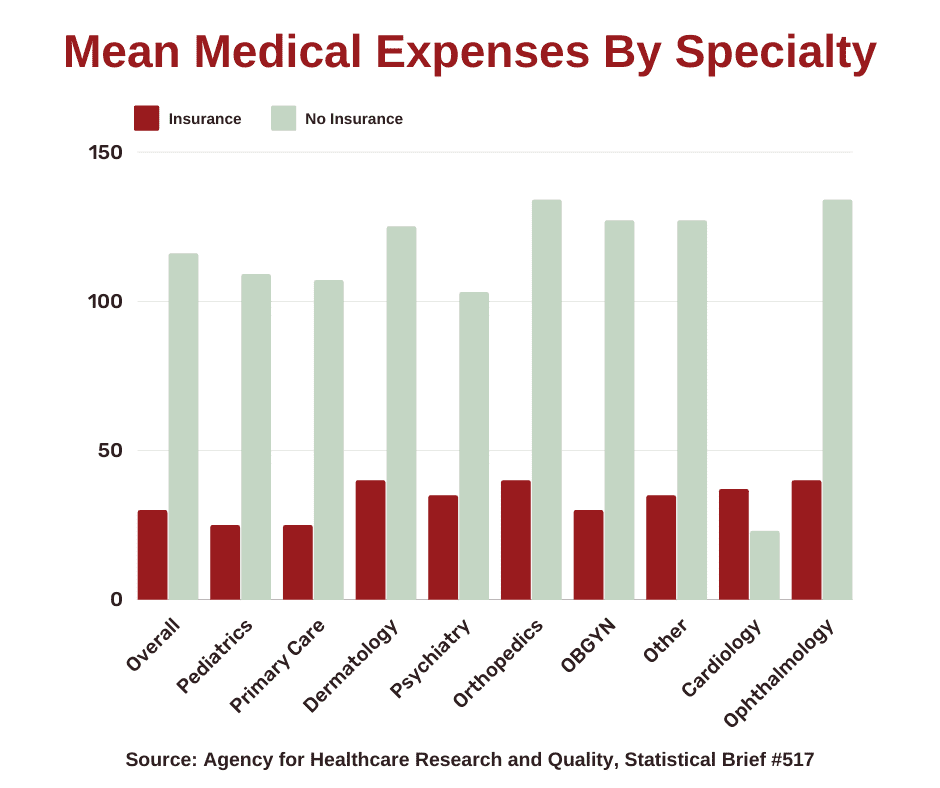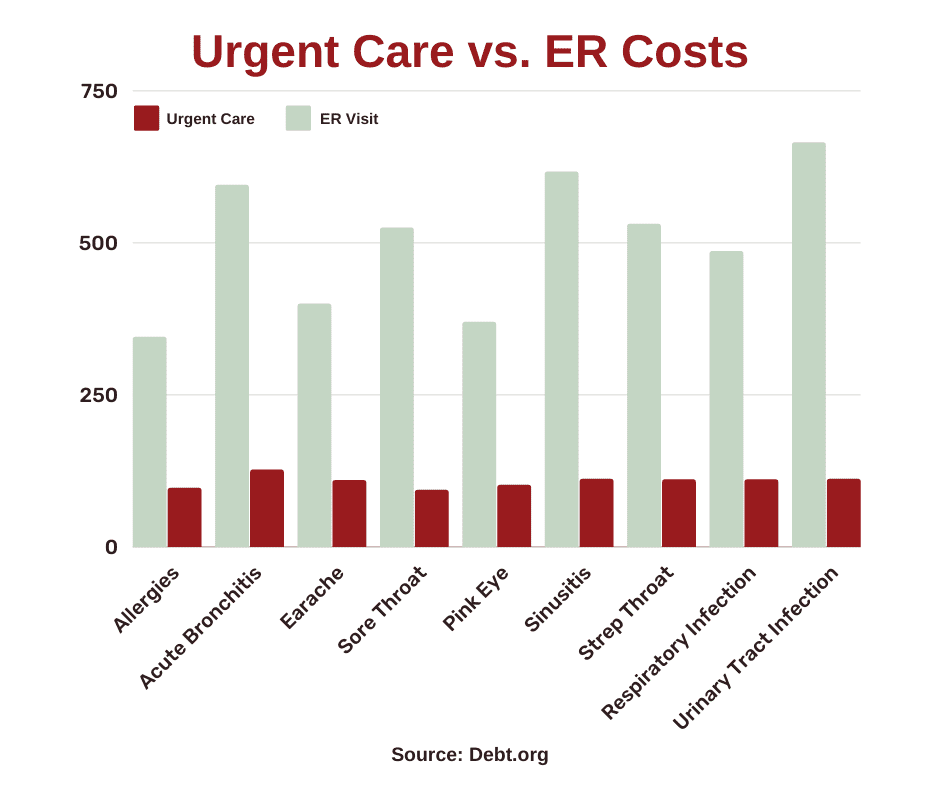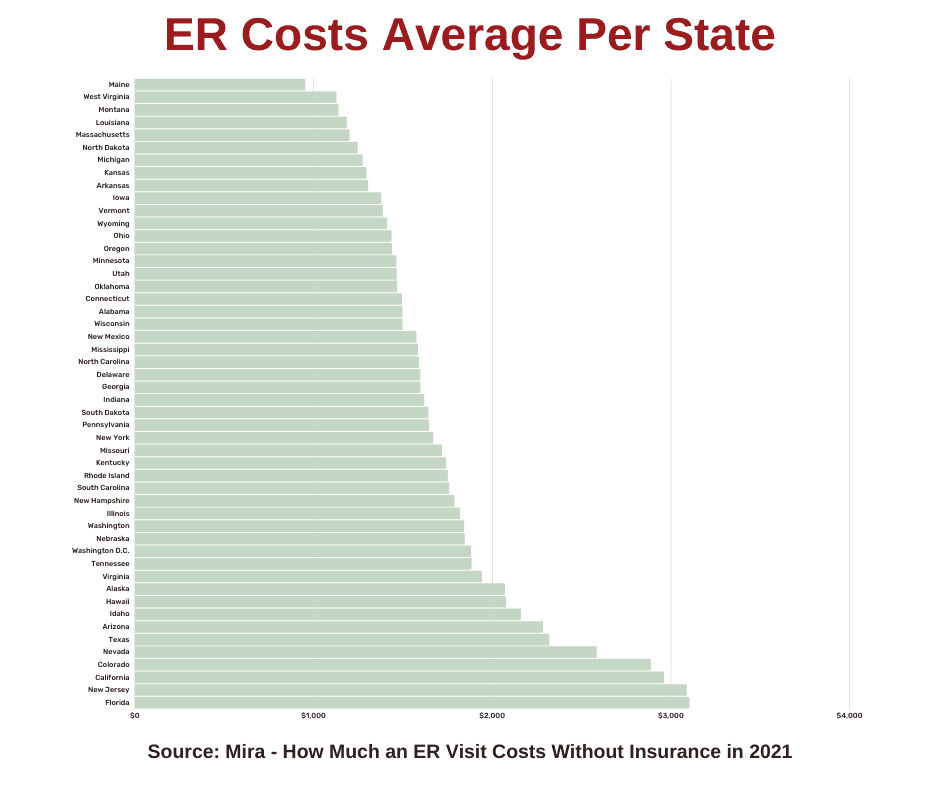How Much Does Primary Care Cost?

Charles Fazio
July 21, 2021
Share Article
Primary care providers act as the backbone of the American medical system, using preventive care methodologies to diagnose, provide treatment, and create management plans for chronic disease as well as educating patients on how to live a healthier lifestyle.
Acting as the first line of defense for any patients entering the healthcare system, primary care providers use their specialized training to diagnose individuals with unknown health issues. Often times primary care services can take care of patients needs, but if necessary they may be referred to specialists that are better equipped for the health issue at hand.
Depending on your age, stage of life, clinical complexity and insurance coverage, the average cost of seeing a primary care physician varies. Regardless of the cost, you and your families health and well being is your most important asset. Striking the right balance that meets your wellness goals while being affordable is important for ongoing care.
So, how much does primary care cost?
This article compares the average costs for primary care visits, urgent care clinics, and emergency department visits. Keep in mind that depending on your specific needs and insurance status, your average costs will vary.
Primary Care Physician Costs
Health care costs have a high level of variance when looking at the specific specialty and the insurance coverage of the patient. Some of the reasons why so much variance occurs include quality of care received, complexity of care that is provided, appointment length, cost of treatment or specialties utilized, and the difficulty of access that patients have to healthcare services.
According to a study by the Agency for Healthcare Research and Quality, the mean expense for primary care specialties without insurance coverage is $186, and the median expense is $107. If you are covered by insurance, the average cost that is paid out-of-pocket is significantly cheaper, with a mean of $50 and a median of $25.
Having health insurance, whether it is Medicare, Medicaid, or Private Insurance makes primary care services substantially more affordable than if you were uninsured. In 2016 patient visits in relation to type of insurance coverage was; Medicare, 38.7%; Private Insurance, 44.2%; Medicaid, 11.7%, Uninsured, 5.4%.

The costs of care provided take into account primary care doctors, general practitioners, family practice physicians, and internal medicine specialists. All of these types of primary healthcare combined made up 34.6% of visits in 2016.
Health care spending averages for some of the other most utilized types of medical care include: pediatrics, ophthalmology, obstetrics & gynecology (OBGYN), orthopedics, psychiatry, dermatology, and cardiology.
Is Primary Care A Cost Or An Investment?
Despite the amount that people pay health care providers for office visits, it can be looked at as in investment rather than an expense. Especially when visiting a primary care physician, the focus on preventive services and patient education reduces long term medical expenses.
Primary care services include blood tests, management of chronic conditions, annual physical examinations, sick care, acute care, and referrals to specialists – all of these specialties reduce health care spending in the long term.
A study of 13,000 participants at the Primary Care Institute at University of Rochester School of Medicine concluded that primary care patients had higher perceptions of health, significantly less serious medical conditions, lower mortality rate, and on overage 33% less annual cost of healthcare. If you want to learn more about the benefits, please check out our article “4 Reasons Why You Need A Primary Care Physician (Get One Today!)“.
Beyond the annual cost savings, people who receive primary care services have a 19% lower chance of premature death. The preventive care nature of primary care services increases the chance of catching a health condition early on, benefitting the patient by not having to visit an emergency room for a condition that could have been easily treated. When visiting the emergency room for a condition that could have been identified and treated by a primary care doctor, it is on average 300% – 700% more costly.
How Do Uninsured People Pay For Primary Care?
Even though comprehensive care is an investment into your health that pays off in the long run, some individuals are still unable to afford the costs of health care due to their socioeconomic status (income).
For millions of people, a medical bill that is greater than $100 could be detrimental to their operating expenses.
If you or someone in your family is not a member with accepted insurance companies or are uninsured and need to make an appointment for an illness or other health concern, you may be able to setup a payment plan with facility.
In a study done by John Hopkins Bloomberg School of Public Health, when uninsured people contacted a primary healthcare office, 18% were told that the healthcare costs could be split up into multiple payments.
This is highly dependent on the individual offices, but for millions of people this could make a difference in accessing a healthcare provider.
Direct Primary Care
Direct primary care has is a relatively new concept that started around 2009, and is posed as a solution to lower healthcare costs for patients, improve the overall patient experience and achieve better patient outcomes.
Direct primary care providers deliver the same specialties as traditional medical offices, but with different approaches to patient billing. For uninsured people, this means a new model for personal healthcare, but with reduced overall health care costs.
The reason for this, is that direct care providers use a unique payment model where their patients pay the physician / practice fixed monthly payments that cover specific primary care specialties. This model creates a patient physician relationship that is outside of the entanglements of insurance, leaving providers and administrators with less time to spend on billing and more time to spend delivering comprehensive care to their patients.
Even if individuals are insured, they can still take advantage of this model of care, using there standard insurance to cover visits that are out of the scope of specialties that are provided in their direct patient care contract.
The downside to this model is that the IRS does not categorize direct primary service fees as a “health plan”, which does not count towards your deductible. In addition to deductible issues, many services such as testing, procedures, and medications may not be covered in the plan, leaving the patient with another out of pocket cost.
With monthly cost that can be around $100, if you do not have any health issues that require consistent visits to primary care practices, this may end up being an expensive option.
South Pointe Healthcare is a traditional clinic, we do not offer any DPC services.
Urgent Care Center Costs
Millions of people choose to visit an urgent care facility yearly, due to insurance status or simply needing urgent medical attention on the weekend, holidays or after hours when traditional primary care clinics are not open.
An urgent care facility can provide high quality medical attention for minor burns, non-life threatening allergic reactions, animal bites, ear infections, closed fractures and other acute care needs.
When looking at urgent care visits, the average cost is more expensive than primary care practices, but still significantly less expensive than a visit to the ER. For example, the average costs for some of the most common urgent care visits are; allergies, $97; acute bronchitis, $127; earache, $110; strep throat; $111.

If you would like to know more about the difference in care between an urgent care facility and primary health care, please check out our article “What Is Primary Care vs Urgent Care?”.
Emergency Department Costs
Unfortunately when chronic disease is left un-managed or a serious accident occurs, it can lead to an ER visit. Compared to other types of treatment, emergency departments are by far the most costly.
According to Mira, average out of pocket cost before insurance coverage ranges from $624 – $3,102 depending on that state. Some of the most populated areas include; California, $2,960; New York, $1,688; Illinois, $1,818; Texas, $2,138; Florida, $3,102.

Looking at research done by New York State in 2018, they found that over half of the total ER visits (7 million) could have been treated in primary care or urgent care. Depending on the severity of your acute illness or injury, the ER may not be the best choice for you.
If you are not sure if you should see primary care, urgent care, or the emergency department for your future medical conditions, please check out our article “Primary Care vs Urgent Care” that outlines some of the key differences.
Closing Thoughts
South Pointe Healthcare offers an unique blend specialties using an integrated care model. We offer primary care, chiropractic, massage therapy, physical rehab, physical therapy, and mental health counseling all under the same roof. This combination of specialties ensures that we can deliver top notch care to our patients for anything from preventive care to chiropractic care and mental health treatment.
We accept most major insurance providers, and also take cash if you are an uninsured person that wishes to see us for any healthcare concern. If you live in Lafayette, CO or the greater Denver area, do not hesitate to give us a call at (303) 665-8444 or check out our easy to use online scheduling system.
Take Charge Of Your Health
Primary Care, Chiropractic, and Mental Health -become a part of our healthcare family today!
*The material contained in this blog post is for general information purposes only. You should not rely on the material or information in this article to make any diagnosis or healthcare decision. Any healthcare decision that you make should be brought up with and agreed upon in conjunction with your primary care provider. South Pointe Healthcare at Coal Creek LLC in no circumstances is liable to any third party for damages that may occur directly or indirectly from information contained in this article.



